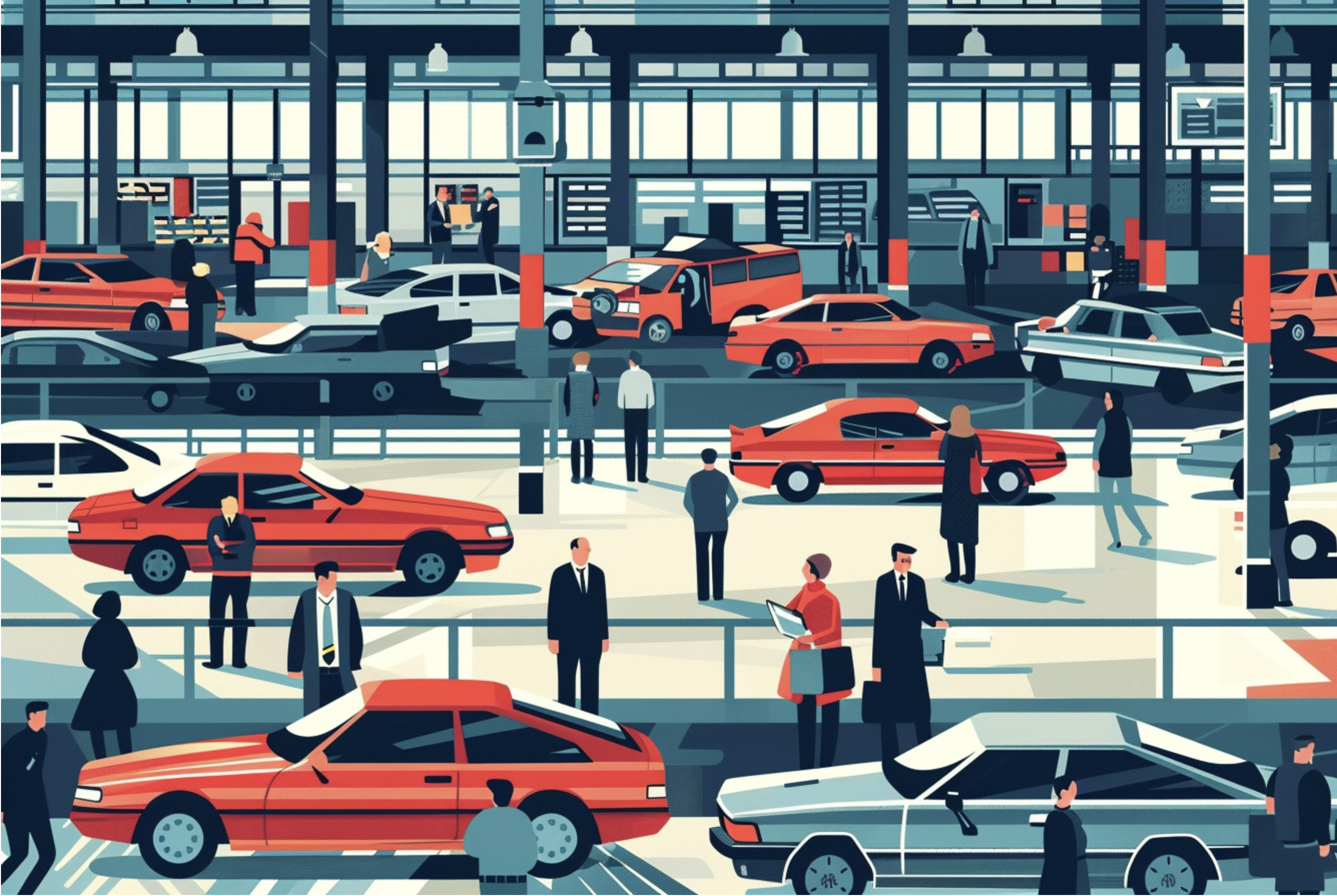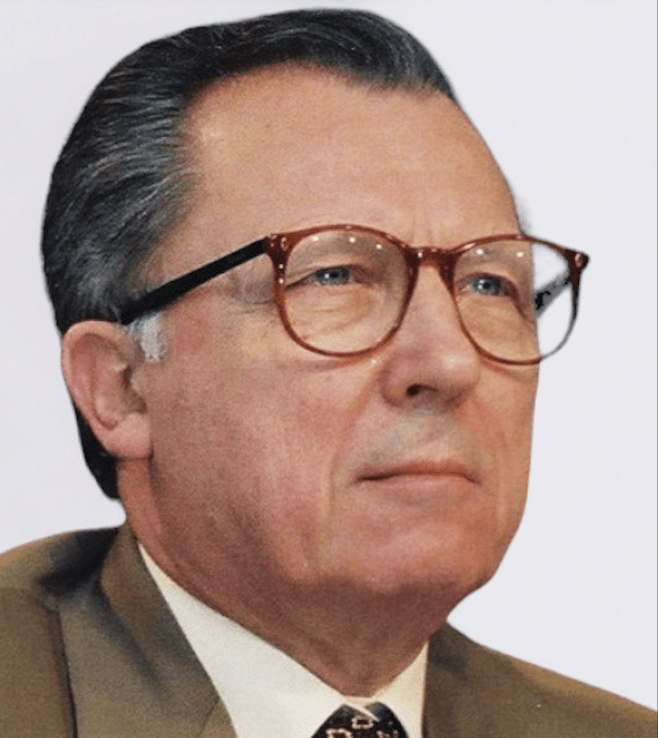How the EU Automotive Industry Survived the First Wave of Asian Competition
European automakers currently face increasing pressures. While the region’s manufacturers long dominated global sales revenues, several competitors from Asia have recently moved into the top ten. But European companies have faced similar difficulties before, and the responses of the region’s automakers and policymakers to previous challenges offer insight for the present, especially on the issues of global competition and energy transition.

European automakers currently face increasing pressures. While the region’s manufacturers long dominated global sales revenues, several competitors from Asia have recently moved into the top ten.
Already by 2020, China, Japan, South Korea, and India were producing nearly four times as many passenger cars as Europe and the US combined. Since then, global competition in automobiles has further intensified.
Not only did the Russian invasion of Ukraine deepen the supply chain crises and economic disruptions caused by the Covid-19 pandemic, but the recent resurgence of industrial policy in the political economy of many countries has reshaped the dynamics of both domestic production and international trade. That the US’s Inflation Reduction Act of 2022 offered fiscal incentives for Americans to buy US-made electric vehicles (EVs) has exacerbated the fears of European producers about being relegated to the margins of the global market.
These concerns were validated in September 2023 when the European Commission announced an investigation into the “flood” of Chinese EVs entering the European market as a potential violation of trade agreements and a threat to EVs manufactured in the EU.
But European companies have faced similar difficulties before, and the responses of the region’s automakers and policymakers to previous challenges offer insight for the present, especially on the issues of global competition and energy transition.
Amid the oil and economic crises of the 1970s, Japanese cars quickly became a favorite of European consumers looking for efficient fuel economy and high emissions standards, all at a low price point. Japanese producers like Nissan and Honda were already investing in local manufacturing in their new growth markets when the European Economic Community (EEC) – the predecessor of today’s European Union (EU) – relaunched regional integration by promising to remove all non-tariff barriers to trade and complete an internal market across the EEC’s member states by 1992.
A Single Market would solve Europe’s painful dual problems of persistent stagnation and high unemployment, argued the European Commission. But European automakers worried that Japanese companies operating in the region would benefit from unfettered access to the internal market. They appealed to national governments and EEC officials for a range of policies that could guarantee them the protections, industrial support, and common norms required to remain globally competitive, both inside and outside Europe.
Despite the fact that the Single Market Program aimed to liberalize markets – and despite Japanese protests against the contradiction of creating a “Fortress Europe” protected by external barriers to trade – the European Commission ultimately decided to grant the appeals of the region’s automakers for protections.

In 1991, with input from European auto industry associations, the Commission negotiated a confidential trade agreement with the Japanese Ministry of Trade to limit Japanese automobile access to the European Single Market until the end of the 1990s
In meetings in Tokyo in the late 1980s, Commission President Jacques Delors had insisted that Japanese access to the European market was contingent on reciprocal access for European producers to the Japanese market. He also argued that European producers would “need more time” to be ready to compete on a fully open global market.
With input from the European auto industry associations (the CCMC and its successor, the ACEA), the Commission then brokered a secretive trade deal with the Japanese Ministry of Trade (MITI) in 1991 called the Elements of Consensus. Some argue that the secretiveness of this agreement reflects the toothlessness of MITI and Japan’s reliance on foreign markets in the 1990s, while others interpret it as part of a larger political strategy by the European Commission.
This agreement established a system of collective protections for the European auto industry and restricted Japanese access to the Single European Market until the end of the 1990s when the Japanese auto industry no longer posed a significant threat to European producers.
In addition to global competition for market share in the 1980s and 1990s was a global contest in environmental protections and vehicle emissions standards, similar to Japan and the US implemented limits for gas and particulate emissions and the use of catalytic converters already in the 1960s and 1970s. Geopolitical competition over emissions standards in the late twentieth century laid the foundation for today’s similar competition over industrial-policy-driven green transition and a global embrace of electronic vehicles (EVs).
While the EEC had adopted the United Nations Economic Commission for Europe’s modest common standards, called “Regulation 15,” in 1970, those standards were no longer effective by the 1980s, motivating some member states in which environmental issues had become politically salient to develop their own national approaches and motivating some export-oriented automakers, like the flagship German manufacturers, to produce to international standards.
European automakers rejected a first open-ended attempt to adopt stricter common standards in 1985 out of concern that its vagueness did not provide sufficient certainty to plan their production. But the persistence of divergent approaches within the EEC threatened the project of market integration.
It was in the context of the Single Market Program that public and private interests converged on the development of stricter common European emissions standards. Policymakers at the Commission wanted to ensure harmonization across the internal market and automakers seeking economies of scale wanted the certainty of clear and common regulation, in line with international standards. New standards were implemented progressively in the early 1990s, laying the foundation for the Euro I-VII norms that followed.
In many ways, the changing landscape of global competition and environmental regulation in the 1980s and 1990s resembles the present. European manufacturers are concerned about increasing competition, decreasing global market shares, and disparate national environmental regulations.
The response of the European Commission to current challenges has also resembled its past approaches. Like many national governments, it, too, has embraced industrial policy, implemented sweeping environmental regulation initiatives like the European Green Deal, complete with incentives for a green transition of the industry, and it has shown a willingness to implement protections against competition, especially from China.
There are fundamental differences between past and present, however. New technologies, changing consumer preferences, the capacities of European governance, the structure of global supply and value chains, and the terms of global trade are all markedly different than they were in the late twentieth century.
Without the urgent motivation of completing the Single Market, will there be enough incentive for regional cooperation to meet the moment?
IEP@BU does not express opinions of its own. The opinions expressed in this publication are those of the authors. Any errors or omissions are the responsibility of the authors.
